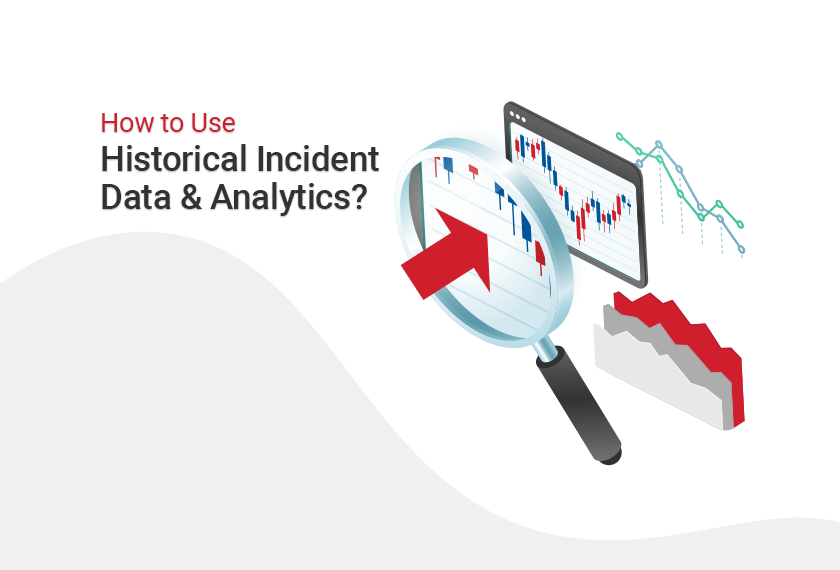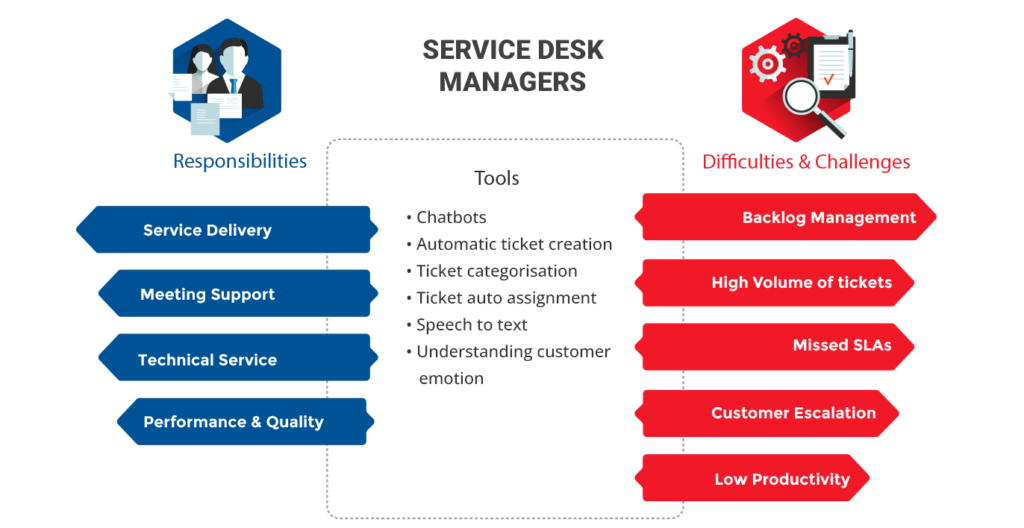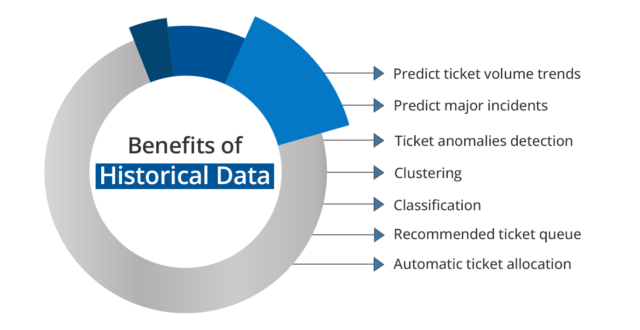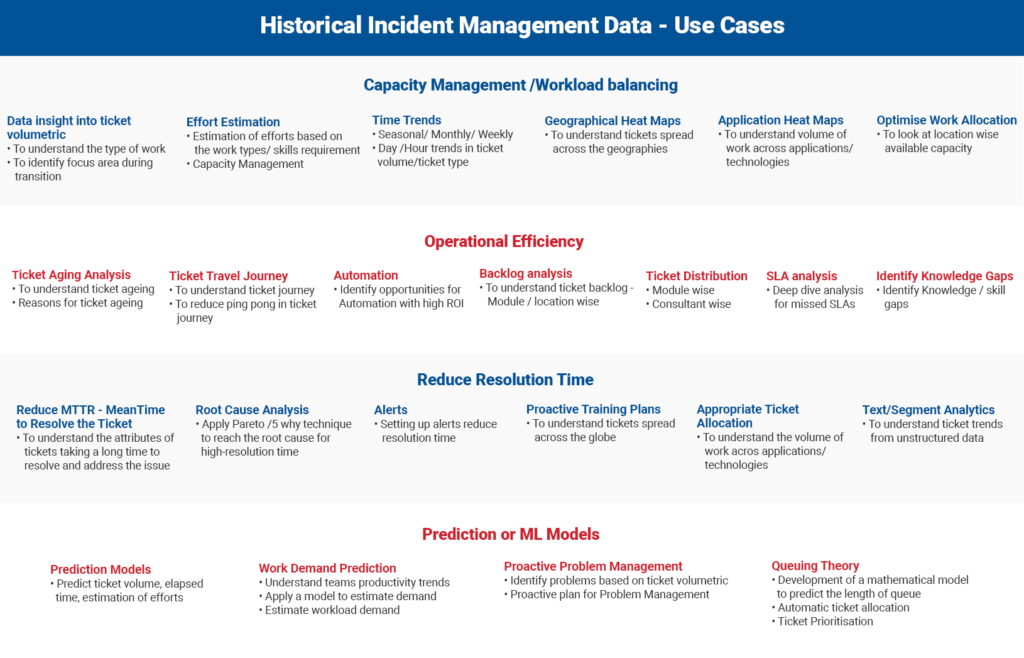
One of the top challenges of managing a service support team isn’t just making sure you’re doing everything you’re supposed to be doing — but doing it correctly. Anyone working with any IT service management tool, ideally, is always looking for better ways to improve processes or meet or exceed service targets or SLAs. And ultimately, create more enjoyable customer experiences.
We spoke with Anjali Mogre, Principle Consultant – Big Data & Data Analytics at Atos, and discussed the actual strategies that their teams are using to prioritise their incidents and service requests.
We’ll also cover how the historical data can help you grow your support team’s efficiency and share some innovative ideas that can be implemented in any organisation.
But let’s start with the challenges all Service Desk Managers are likely to face.
Difficulties & challenges of Service Desk Managers
There are so many great tools and technologies available that can help Service Desk Managers to improve their efficiency. Some of them are:
- Automation
- AI learning
- Machine learning
- Chatbots
- Tools for ticket categorisation
- Tools that can understand customer emotion
So why then do Service Desk Managers deal with so many challenges?
Well, for those in the know, it’s not easy to consistently provide outstanding service delivery as there are so many things to take care of at the same time! Service Desk managers are usually juggling so many tasks and ‘to-dos.
In fact, many may argue that is one of the biggest reasons why Service Desk Managers face challenges such as failed SLAs, managing high volumes of backlog tickets, constant changes in processes, tools or technology are the drive to do more with less and organisations wanting faster, better and cheaper outcomes.

No matter how many tools a Service Desk Manager may have at their disposal, there is still a high probability that they will come across or deal with some of these issues. That’s where analytics and historical data can help. Most of today’s tools are very sophisticated – and they already provide historical data and dashboards.
However, they can sometimes be neglected.
Transforming historical incident data into future insights
ITSM tools are designed to help support teams manage service lifecycles and meet SLAs. However, depending on the ITSM tool in use, it may not be capable of providing a higher level of deeper insight. Or maybe, an ITSM tool isn’t being used to its full capacity due to configuration needs, lack of integration or simply that it’s just too busy to use a tool proactively due to the challenges we have already touched on.
So, what could a Service Desk Manager be missing?
Well, it’s harnessing the power of historical data. If Service Desk Managers are able to access the deeper insight that their data could provide, they could improve their operational efficiency and create better end-user and employee experiences.

With the help of sophisticated predictive analytic tools and models, any organisation can use historical and current data to forecast trends and end-user behaviours.
Models are the foundation of predictive analytics – they allow Service Desk Managers to use past and current data to create actionable insights.
Let’s look at some of the possible use cases that anyone can implement based on their historical incident data.

Source: Atos
According to Atos, this model can separate the use cases according to the processes. So, from the beginning of a project to capacity management to operational efficiency, resolution time, and ultimately predictive machine learning models.
For example, the knowledge gap is one of the important aspects of operational efficiency. And it can impact how quickly an incident is managed from being created to its resolution, and obviously, the quicker an end-user is returned to a full working capacity after reporting a technical issue to the Service Desk, the better.
At Atos, they use ticketing analytics to help them find out where any knowledge gaps exist through the lifecycle of an incident. After identifying those gaps, they establish the required training needed to plug a knowledge gap and upskill as necessary.
One of the key areas that help Atos significantly is Proactive Problem Management. Based on the analytics, they look for issues that could be addressed through problem management. And based on those proactively identified problems and identifying root causes that may not have been identified without the analytics, change management helps creates more value that can be seen in reduced demand, lower incident volumes and increased opportunities for process automation.
“Data analytics should be used to properly identify opportunities and which part of the process can be automated.”
— Anjali Mogre
How the Atos team prioritises incidents
We already know that putting in the effort to create and implement a robust incident management process that includes clear incident prioritisation and categorisation is beneficial for supporting an end to end life cycle management.
But how exactly are other companies doing that?
High-value tickets are prioritised first
Let’s look at the Atos model for prioritisation and recommended ticket queue. Their model is simply based on Statistical queuing theory — a mathematical study of waiting lines, or queues where a queueing model is constructed so that queue lengths and waiting time can be predicted.
However, you may ask us, “Well, what is so special about their model? Or how are they applying this to their querying data?”
As with any major outsourcer, Atos is a complex service with multiple customers, so managing service demand across multiple support channels is no easy job. One thing they have introduced is using the automated engine to help the team set priorities for acting on ticket closure so that overall closure KPIs are met. So, if a queue rate is high, that means that they identify and predict the incidents that need to be resolved based on priority to meet their multiple SLAs.
This is supported by automated alerts so that Service Desk Managers receive notifications that action needs to be taken. This gives Service Desk Managers the information they need to manage incident closure efficiently.
Historical data is a valuable asset
Historical data can help organisations create value and, combined with analytics – is a valuable asset for any organisation. However, none of the mentioned models can’t be prescribed as a one-size-fits-all solution. You can do many other things to ensure that your IT service management system is reliable and effective, from prioritising tickets, categorising tickets, creating tier systems and more.
That said, think about what you want to learn from your incident and service request data and dedicate time and attention to analysing your data.
If you would like to check some project case studies where ticket analytics is applied to real ticket data, please find the full video here: Deep data insights & predictive models for service desk ticket data
 Want to learn more?
Want to learn more?
Get the most out of your data and effectively utilise Business Intelligence by joining us for this upcoming virtual event: ‘BI: How To Get The Most From Your Data‘.
To join us, register for free here
Written by:
Antonija Bozickovic
Content Creator at Service Desk Institute


























